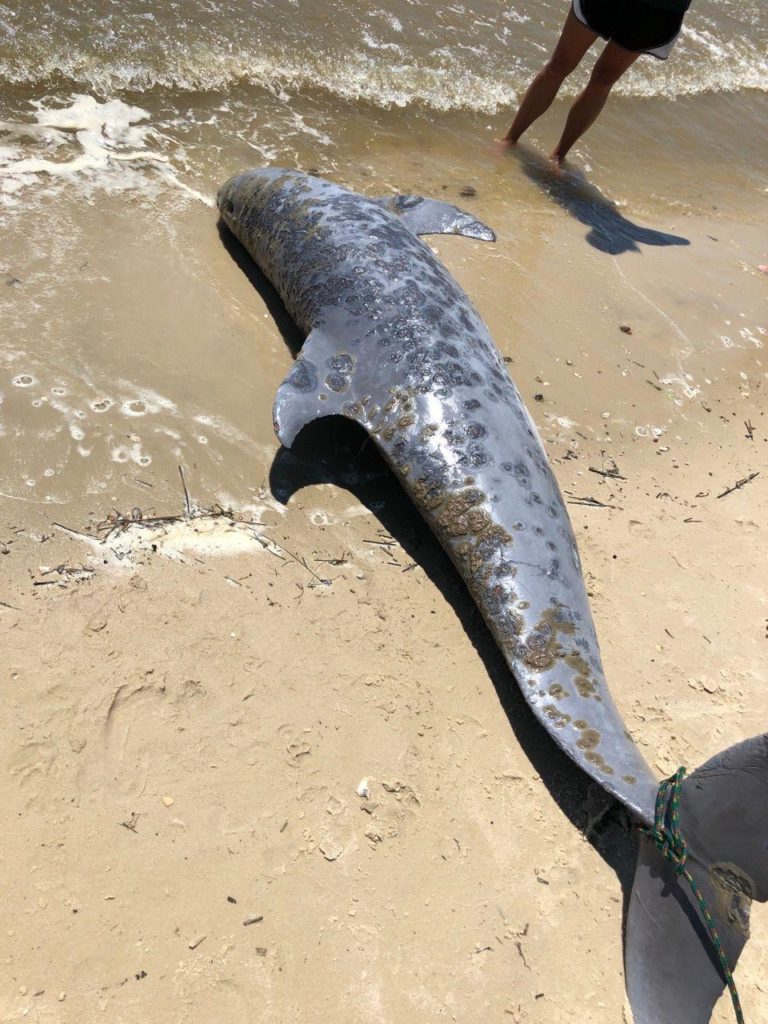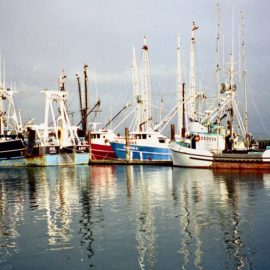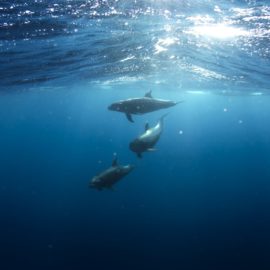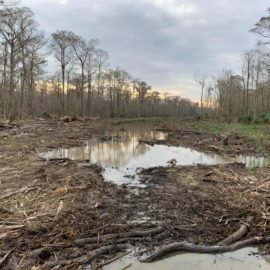
Bottle nose dolphins are a a sticky point with the Mid-Barataria Diversion. The plan says a lot will die. The mitigation plan says not so many. The Marine Mammal Commission says slow down – fix it or stop it.
Louisiana officials have failed to say how the proposed Mid-Barataria Sediment Diversion can be operated without killing off most of the bottlenose dolphins in the Barataria Basin, or to identify ways to successfully protect the dolphins from health issues or death, according to the federal agency charged with protecting dolphins, whales and other marine mammals. In a letter to the U.S. Army Corps of Engineers and the Louisiana Trustee Implementation Group, the federal Marine Mammal Commission argued that officials need to evaluate how to protect some 2,000 dolphins in the Barataria Basin as part of the planning work on the $2 billion diversion project. “The near total loss of the Barataria Bay bottlenose dolphin stock due to (diversion) project operations, or even losing the stock completely, appears inevitable if the project goes forward as planned,” the commission said in an official comment letter in response to the project’s proposed environmental impact statement and draft restoration plan.
nola.com
The Commission recognizes that the plan received a waiver on the dolphin issue but they insist the state is required to consult with them for mitigation or alternative plans.
“It is unclear … what effort was made by the state of Louisiana to meet this statutory responsibility,” the commission said. The official comment, which was sent in ahead of the Thursday deadline for groups to respond to the draft plans for the Mid-Barataria project, comes as the Corps, the state and the trustees work towards addressing concerns about the project’s environmental impacts before issuing a final plan expected in early 2022.
This letter is one of many received since the Plan has been opened to public comment. The LT Governor and the local parishes, other than Orleans, have come out in opposition. Environmental and State leaders have come out in support.

The Mid-Barataria Diversion is the keystone project in the state’s $50 billion Coastal Master Plan and involves building a channel through the Mississippi River levee in Plaquemines Parish to allow sediment to flow through and rebuild land. The state’s proposed plan for operating the diversion would result in freshwater and sediment flowing into the basin when the river reaches a predetermined flow rate. The diversion would operate an average of 177 days a year, mostly from January through June. The state predicts that the sediment carried by the water would create 27 square miles of new wetlands and marshes — and save many more — by the end of 30 years, with continued sea level rise reducing that to 21 square miles at the end of 50 years.
Fresh water, however will kill all the dolphins in two of four areas within the first ten years of operation. The number of dolphins in the remaining two areas will be drastically reduced. At the 50 year mark most dolphins would be gone.
Dolphins exposed to water containing only 5 parts per thousand of salt for more than 21 straight days have a low survival rate. In most cases, they develop lesions on their skin that ultimately kill them. The freshwater also reduces the ability of dolphins to reproduce. Researchers say that the dolphin groups also have fealty to the different areas of the basin in which they are currently swimming and feeding, and it’s unlikely that they could be enticed to move. If they were moved, they’d then be forced to compete with dolphins living in those areas.

The Commission says that even with the waiver the Oil Pollution Act says intervention is possible with the near extinction of the dolphins. Tis is because of the Deep Water Horizon monies that are being used.
But the commission said the oil law “provides that evaluation of the proposed restoration alternatives must be based on, at a minimum, the extent to which each alternative will prevent future injury, and avoid collateral injury, as a result of implementing the alternative.” The deaths of the majority of the dolphins in the basin because of the diversion’s fresh water would be such a collateral injury, the commission said. And if the state decides to go forward, the diversion should be operated to reduce the harm to dolphins, potentially by cutting its flow and therefore its ability to build land. The project’s developers have already said that smaller diversions and the use of dredging wouldn’t make sense, based on modeling that shows they wouldn’t build nearly as much land as the bigger diversion.

Chip Kline, chairman of the Coastal Protection and Restoration Authority board, which oversees the project, said the state believes its goal for the diversion remains in line with the commission, and that the diversion’s operations can adapt if needed. “Because it is not possible to precisely predict future conditions, the project will be operated under an adaptive management plan that allows flexibility for changes in operation to optimize project benefits and minimize impacts where possible,” Kline said. “CPRA anticipates a good deal of public comment on this adaptive management plan which will be used to refine our strategy as project planning moves forward. Additionally, the project will include some defined mitigation measures that will be put into place well before the project ever begins operating.”
There is $40 million for mitigation yet that may not make those opposed happy. A a number of animal advocacy groups, including the Animal Welfare Institute, the Center for Biological Diversity and the Humane Society of the United States oppose the diversion.
In a joint letter, the said restoring the Barataria Basin is “a worthy endeavor,” but they couldn’t support it due to the impact on the dolphins. “Their deaths will be agonizing and slow,” the letter said. “Should this sediment diversion proceed, the BBES dolphins will pay the price for the past mistakes of humans.”
And so the conflict continues. Overall the diversion is good but, like any action, there are off sides. Who will win?



